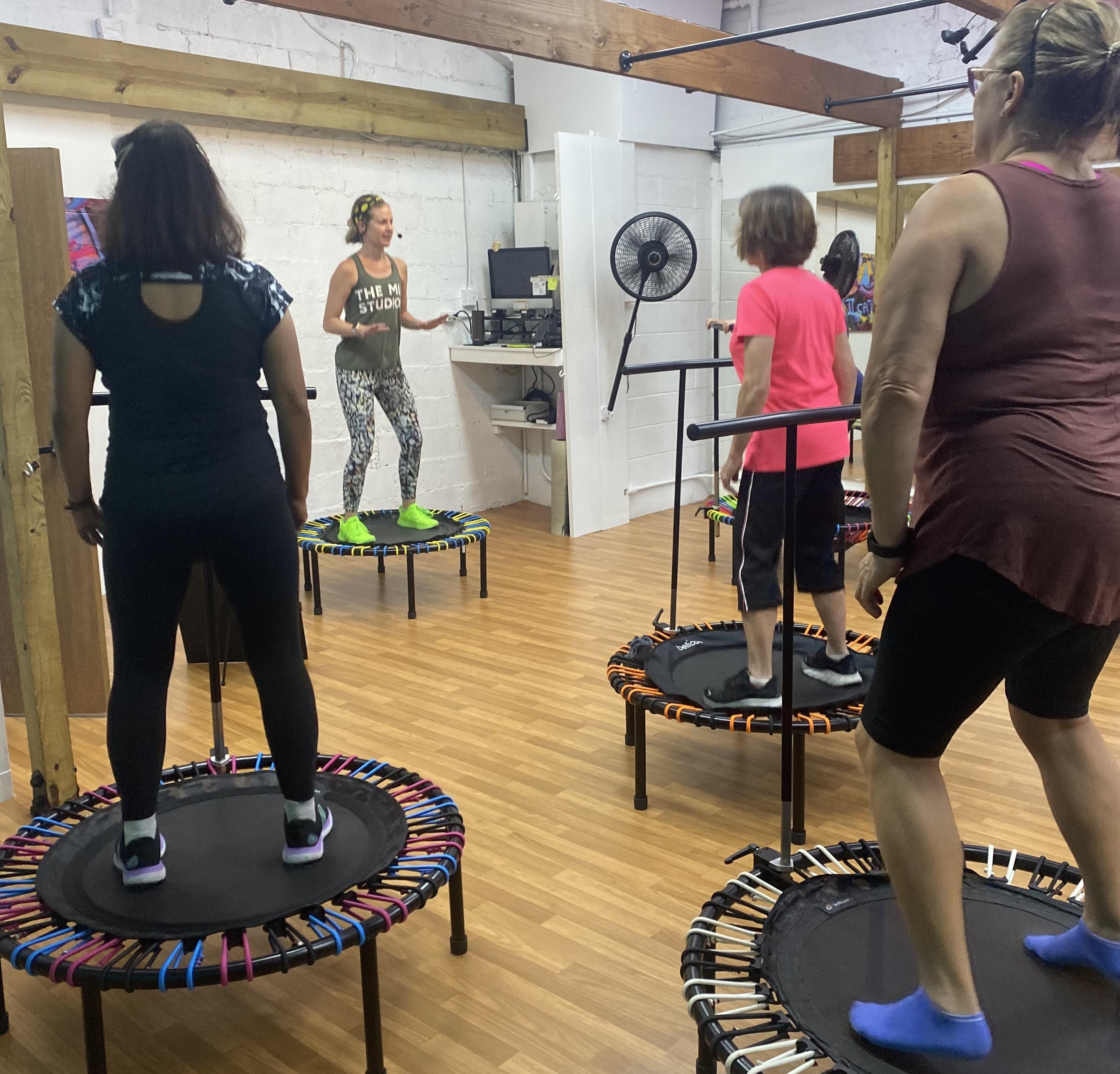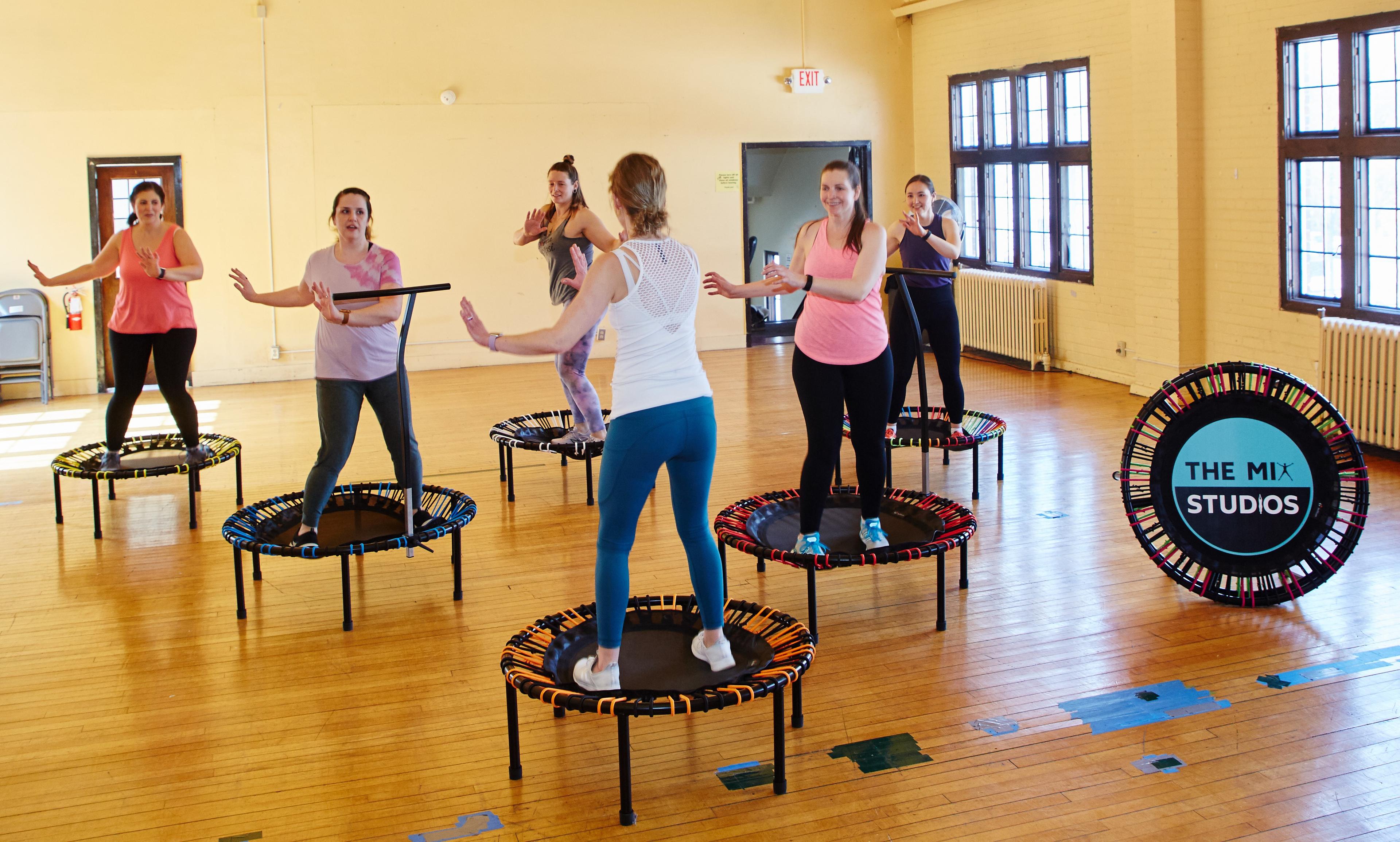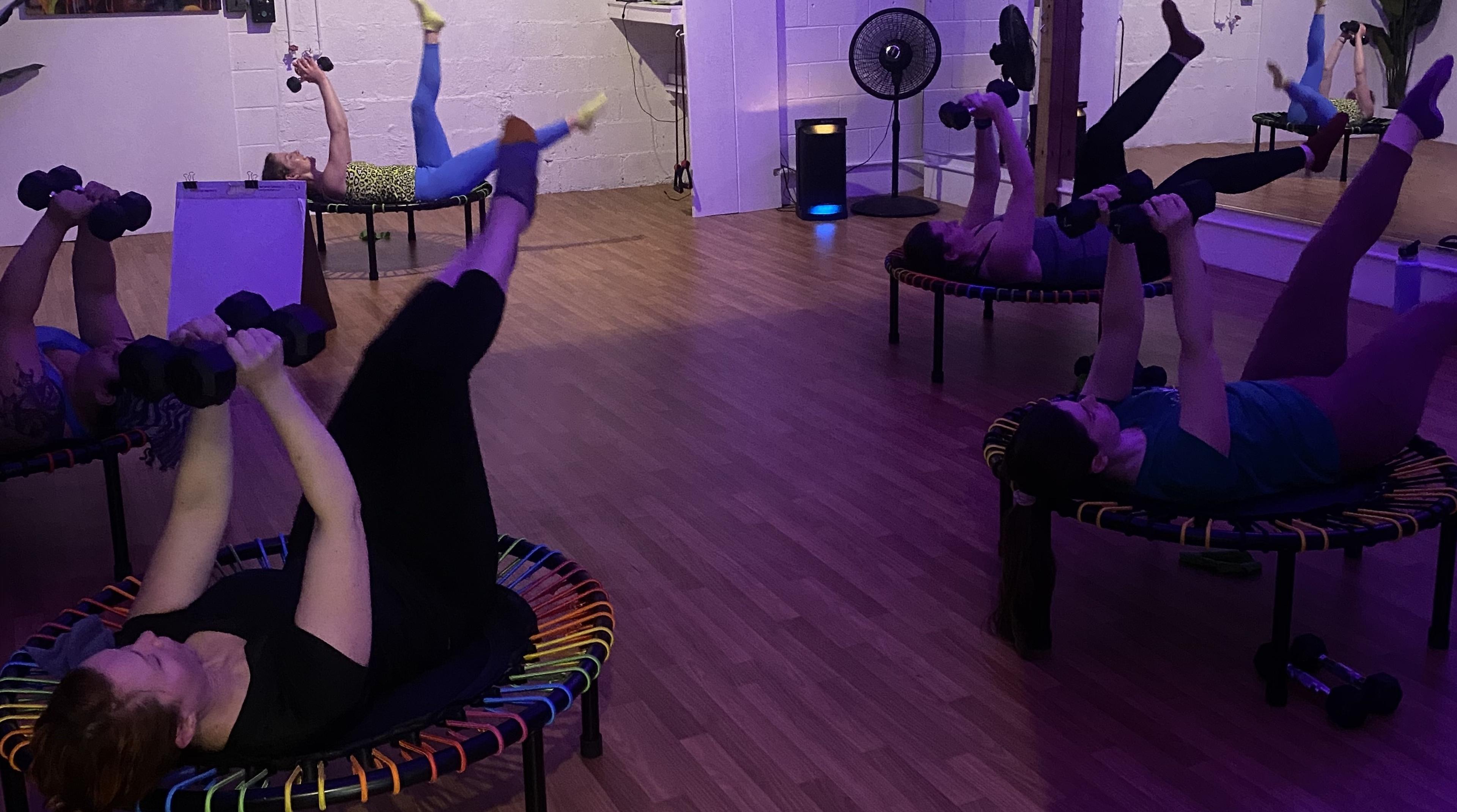Find Your Fit: Bounce Your Way to a Great Cardio Workout Using a Mini Trampoline
Jake Newby
| 5 min read

Why should kids get to have all the fun on trampolines?
Bounce – or “Rebounding”– is a cardiovascular-based, mini trampoline workout offered as a group class at many fitness studios. You can also do it at home if you choose to spring for your own mini trampoline.
Bounce is low impact, so if you’re worried about achy joints after a long outdoor run or treadmill session, consider Bounce as a cardio-centric substitute. The low-to-the-ground nature of the mini trampoline provides more stability than the kind of trampoline you might be picturing from your childhood, meaning you won’t go flying off it as you perform the movements.
Sarah Kreiner, owner and personal trainer of The Mix Fitness Studios in Ypsilanti, was turned on to Bounce by her clients years ago. An avid runner, Kreiner became weary of the potential long-term joint damage running can cause. Since her body is her livelihood as a trainer, and she wants to protect that asset, Kreinerstarted to run less and Bounce more.
“I had no idea what it was until then,” Kreiner said. “From years of seeing clients injure themselves from running and high impact HIIT workouts and burpees and things like that, I started doing Bounce with her and realized how good it felt and how great it was for my cardiovascular system. Plus, just how fun it was.”

How are Bounce classes structured?
Bounce classes are synced up to the rhythm of music. Kreiner guides high, medium and lower-level classes, in which the beats per minute of a particular song dictate the pace. The lower the level, the slower you’ll go, making these classes friendly for all ages and fitness levels.
Kreiner’s classes consist of three or so songs per hour-long session. They incorporate varying movements to keep the body moving in different directions.
“With running and biking – two common forms of cardio –you’re always relying on the same range of motion and going in the same pathway. You’re using the same muscles over and over and over again,” Kreiner said. “On the trampoline, we mix up the moves so you’re moving your legs out, side to side, and front to back. You’re moving with a wide stance of your legs for some moves, then a narrow stance of your legs for others. You really hit all the muscles, joints and ligaments in different ways with different movements.
“It’s kind of like running where it’s repetitive hitting, except you’re on this soft, impact-absorbing surface that doesn’t feel harsh on your joints,” she added.

What body parts do Bounce workouts target?
When you work out on a mini trampoline’s unstable surface, you use your balance muscles to keep you steady. Pushing down into the trampoline activates your muscles to keep you pushing, Kreiner said.
“The great thing is that no matter what class level you try, you can push harder or faster, and your muscles are going to burn more,” she said. “Or you can be gentler and lighter with your bounce, and your heart rate won’t get as high, and your muscles won’t burn as much.”
Bounce works lower body muscles like the hips, quadriceps, hamstrings and calves but it does wonders for your core, as well.
“A lot of people do it barefoot or with grippy socks, so they work a lot of feet muscles you tend to work out when you’re not using shoes,” Kreiner added. “But I think something big that a lot of people don’t think about is they are working their core the whole time. To stay balanced on the trampoline, your deep core muscles have to engage to keep you upright and keep you moving well.”
What should beginners know before trying Bounce?

If you want to Bounce at home, Kreiner has some advice to offer. First, she said, it’s important to remember that not all trampolines are created equally. She’s bounced around between mini trampoline brands and has landed on two that she trusts for her classes.
“If you’ve been on a 1980s rebounder with wires holding it on, that feels totally different than the trampolines we use,” she said. “We use Bellicon, but there’s also a company JumpSport and they provide night and day differences in the kind of impact you feel.”
Kreiner added that it’s important for newcomers to fight the instinct that they’re going to fall off the mini trampoline when exercising on it.
“Everyone thinks they’re going to fall off and 99% of the time people say, ‘I don’t know why I was so scared,’” she said.
Most mini trampoline manufacturers add a balance bar to their models. This feature is worth exploring if you’re new to the workout and want to buy a mini trampoline for your home.
“To feel safer and get a feel for the workout, you should try at least one class or an online class,” Kreiner added, before mentioning the communal benefits and overall advantages provided by a guided class.
“Sometimes these things are no fun by yourself,” she said. “With a group it’s so much more fun. It’s helpful, too, to learn under an instructor who leads you through and guides your moves. If you can get out and do it in a group or in a class, you’re going to have way more fun. You’re probably going to be safer, and you’re probably going to stick with it for longer, which is always key. Consistency is key with anything in fitness.”
The Find Your Fit series launched to introduce people of all ages to workouts that may not be on their radar. It's about helping people explore fun and new ways to find a workout they can consistently perform and enjoy.
More from the Find Your Fit series:
- Sneak a Full-Body Workout in at the Playground With These Tips
- What is Tabata?
- Qigong’s Low-Impact, Full-Body Movements and Mindfulness Techniques Can Benefit Older Adults
Photo credit: Sarah Kreiner





